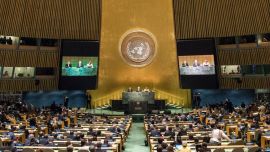After delaying 14 months (largely due to the coronavirus pandemic but also procrastination), the Alberto Fernández presidency is now poised to deliver on its campaign promise of multi-sector (although not multi-party) negotiations aiming at a macro-economic consensus based on a wage-price agreement. Optimists hope that this might produce something approximating the plan demanded by the business establishment and many economic experts ever since the debt settlement with private creditors six months ago but that can only result from these talks – the government cannot negotiate without defining its objectives and here the doubts already begin.
A plan would be too much to expect from this government, an opinion which need not stem from the disbelief in plans famously expressed by President Fernández in his Financial Times interview last July or from any misgivings about his economic team. Last week it was Burns Night in Scotland and it was Robert Burns who first reminded us that “the best laid plans of mice and men” often go wrong – how much truer this rings over two centuries later, with the accelerating pace of technological change leaving most of any jobs which might be created with a built-in obsolescence. Nobody should thus expect President Fernández to add Soviet five-year plans to vaccines in his shopping-list with Russia, but he can reasonably be expected at least to know what he wants, setting clear economic and political objectives for these multi-sector talks, and even at this preliminary level there is growing confusion.
Even taking the most immediate objective of wage-price convergence, the road map is contradictory. The benchmark for this process is the 2021 Budget projection of 29 percent inflation for this year but almost everybody (including the trade unions) is expecting that figure almost to double. Even to repeat last year’s 36 percent inflation would be extremely uphill without the powerful deflationary force of lockdown meltdown and with trillions of the pesos printed last year still in the pipeline – perhaps the only scenario whereby 29 or 36 percent might be possible would be a coronavirus upsurge shuttering almost everything and triggering a recession devastating for the economy and the government’s electoral chances alike. Yet if the unions draw their own conclusions and go for more, they would be pushing at an open door – the government seeks real wages running three or four percent ahead of inflation to create an electoral feel-good factor, setting no collective wage bargaining caps towards that end. A strategy of taming inflation via continued price freezes without wage restraints hardly seems realistic – not that the Juntos por el Cambio opposition, perhaps embarrassed by its own past failures and happy to let the government dig its own grave, is proposing any constructive alternatives on the economic front, hammering away instead at judicial and other issues.
But assuming that this strategy does work with price stability, wage recovery and a calm exchange rate all granting a smooth ride to the October elections, that might seem a dream scenario for the government, but is it?
Until now defining economic objectives have been intractably complex for Peronism but setting political goals extremely simple – the Victory Front label of Kirchnerism through to 2017 said it very bluntly with winning the name of the game and nothing else really mattering. But now the question arises as towards which elections should strategy be geared – these upcoming midterms or the big one, the presidential and general elections in 2023? Given recent commodity price trends and the success of government bonds with all those surplus pesos drifting around, the government might just have a fighting chance of reaching October with a contradictory incomes policy and a vulnerable exchange rate intact. But quite apart from deciding what percentage represents success this year (the Kirchnerite wing of the ruling coalition aspires to a two-thirds majority to facilitate constitutional changes), what comes next?
The current combination of capital controls, price freezes, overpriced bonds, etc. might suffice for the next eight months without bursting but hardly a further two years – the disarray of relative prices, repressed inflation, a primary deficit alone of 6.5 percent of Gross Domestic Product, minimal reserves and single-digit investment percentages are sure to come home to roost long beforehand. To win these midterms with 151 of the 329 Congress seats at stake, is the government prepared to sacrifice the re-election of President Fernández (or the triumph of Frente de Todos caucus leader Máximo Kirchner or Buenos Aires Province Governor Axel Kicillof, the candidates reportedly favoured by the vice-presidential power behind the throne)?






















Comments